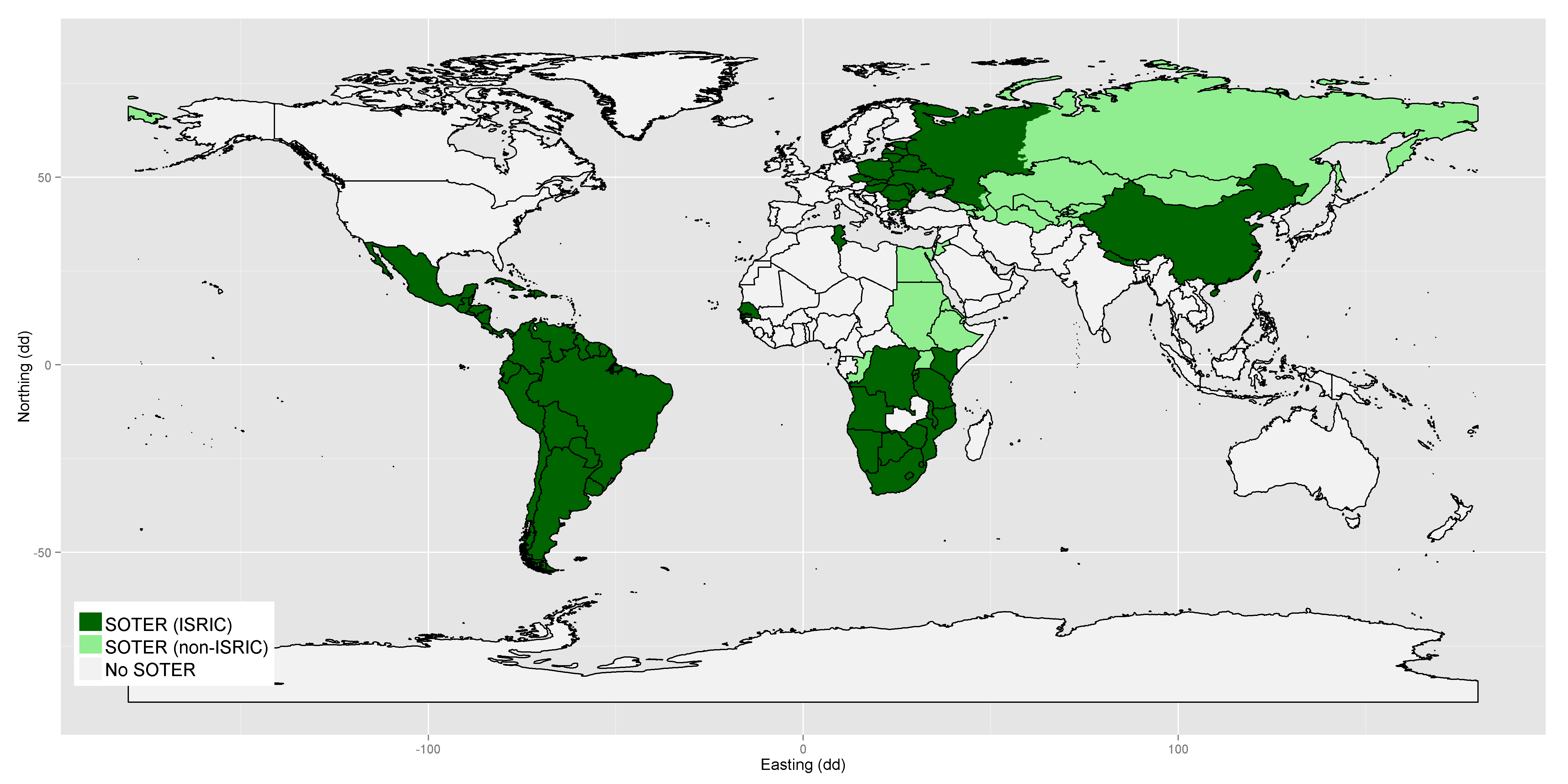Data on basic soil characteristics, such as the organic carbon content or pH, are important input to agro-ecological assessments and climate studies. ISRIC has been developing Soil and Terrain (SOTER) databases, in close collaboration with partner organisations, that provide such information for regions, countries and continents. A SOTER database is composed of a map that delineates the SOTER map units and a table with terrain and soil data that can be linked to the units of the map. Upon gap-filling, such databases (SOTWIS) can be used to underpin a wide range of studies.
SOTER databases provide data on key soil and terrain properties that are relevant input to agro-environmental applications such as food projection studies, climate studies (carbon sequestration), land evaluation or hydrological catchment modelling.
The SOTER programme was initiated in 1986 by the Food and Agricultural Organization of the United Nations (FAO), the United Nations Environmental Programme and ISRIC, under the auspices of the International Soil Science Society. The aim of the programme was to develop a global SOTER database at scale 1:1 million that was supposed to be the successor of the FAO-UNESCO Soil Map of the World. A SOTER database with global coverage was never achieved, but SOTER databases were developed for various regions, countries and continents.
A SOTER database is composed of a map (in GIS polygon format) that delineates the SOTER map units and a set of tables in a relational database (in MS Access or PostGreSQL format) with terrain and soil data. The information in the table can be linked to the units of the map.
Derived from the SOTER databases are the SOTWIS databases. Soil profile data in the SOTER databases are often incomplete, which hampers their applicability for quantitative studies. To overcome this, consistent taxo-transfer rules, developed during the WISE project, were used to fill gaps in the SOTER soil profiles. From these soil profiles, a consistent set of 18 soil properties was derived for depth intervals of 20 cm up to 100 cm depth. The soil properties include: organic carbon, total nitrogen, pH, cation exchange capacity, base saturation, aluminium saturation, calcium-carbonate and gypsum content, exchangeable sodium, electric conductivity, bulk density and the sand, silt and clay fractions.
SOTWIS databases have been used for a wide range of applications, including assessments of impacts of soil degradation on food supply, soil vulnerability to pollution and modelling of soil organic carbon stock and changes at national and regional levels. An important application has been to provide updated materials for the SOTER-covered sections of the Harmonised World Soil Database, which is an interim update to the FAO-UNESCO Soil Map of the World.
Availability of new, high-resolution data sources with global coverage such as the SRTM digital elevation model and MODIS satellite imagery, and developments in quantitative soil-landscape modelling and computer science during the first decade of the 21st century offered new possibilities for developing SOTER databases. The EU-funded e-SOTER project (2008–2012; managed by ISRIC) developed a quantitative approach for developing SOTER databases by exploiting new data sources and modelling approaches. Pilot e-SOTER databases were developed for case study areas in Western and Central Europe, Morocco and China.
SOTER & SOTWIS datasets
You can find an overview of available SOTER products on our SOTER project page.
Access to the SOTER and SOTWIS datasets is provided through the ISRIC Soil Data Hub: SOTER data | SOTWIS data.

